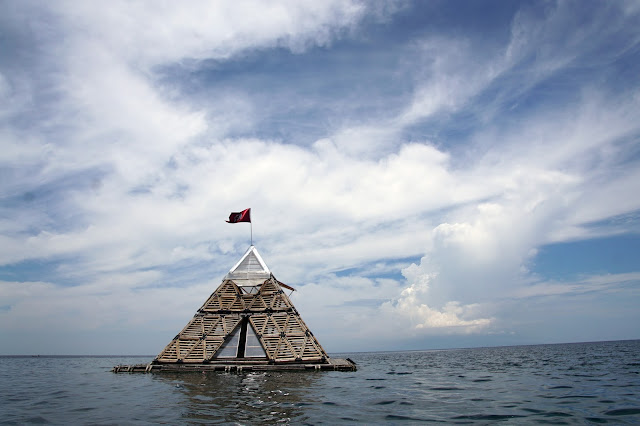 |
| Atop C&L Bay View, one of the new hotels in Dumaguete City with a rooftop vista and skyline. - Photo by Hersley-Ven Casero |
After 15 months of living in the United States and establishing myself as a licensed architect, networking and acclimating back to cooler seasons in Minnesota, I have returned to Dumaguete City and Foundation University as a Fulbright Scholar with the Philippine-American Education Foundation, to continue the efforts with the first design-build architecture program in the Philippines.
My return to Dumaguete City and Foundation University has been most welcoming. I arrived about a month ago, and it's taken me that long to adjust, sit down and actually write a blog. This is the first time in my 36 years that I have returned to a city to re-live it. Since leaving home at 18 bound for college, I've moved over 18 times in my adult life. The idea of "home" has always been temporary. Although, every place that I've lived, whether it was four months or four years, I've settled into the space to make it my home. It's been a pattern in my life that I continue to move, relocate, and expand my opportunities, usually for work or educational purposes. But this temporary move to Dumaguete City is much different. For the first time, I've moved back to a familiar place while also expanding my career, without hitting the reset button.
When I arrived in Dumaguete for the first time in 2012 (
see post), everything was so fresh and limitless. The new adventure to a new land for a new job and foreign culture, was a risk and leap in my life that kept me on high while I was living here. After adjusting to life in America and my culture, returning back to the same places, faces, and even the same housing community (different unit, same layout) in the Philippines, lacks the luster from which it all started. Lacking luster isn't bad, boring, or less than. Rather, it's comfortably familiar and I often find myself nostalgic for the city I knew in 2012. I've been so use to change and moving onto the next opportunity in my life, that for the first time, I'm realizing I want things to stay the same. Friends that were once living here, have left. I was looking forward to getting my hair cut with the trendy Korean hairdresser, but soon learned, she has also left. I keep re-living restaurants and venues I frequented in 2012, to find some have closed, others have expanded, changing the way I once remembered them. My biggest impression after returning to this place is just how fast this city is developing.
I am happy I was able to experience Dumaguete City in 2012, because now in 2015 it seems more metropolitan. There are more foreigners on the streets, and restaurants offering foreign dishes. And the traffic (which was once bad) is almost intolerable at times and more dangerous. Dumaguete City, was once a stopover for Apo Island diving tourists. It is now a place for retiring ex-pats. There has also been an influx of Korean's making Dumaguete their home. Alternative education opportunities catering to Korean students are attracting middle class youth to the area. But the integrity of Dumaguete has not changed, it is the "city of gentle people" and the home of so many helpful, smiling, native faces.
I'm taking the time to simply just take it all in. After all, I only have five months and learning that I can't actually re-live a place and my past experiences, instead, I am experiencing Dumaguete anew and realizing that "we can never go back to a place to find it exactly where we left it. Some things, somewhere, will always have changed mostly ourselves." -Taiye Selasi (TED talk
Don't Ask Where I'm From, Ask Where I'm Local)













